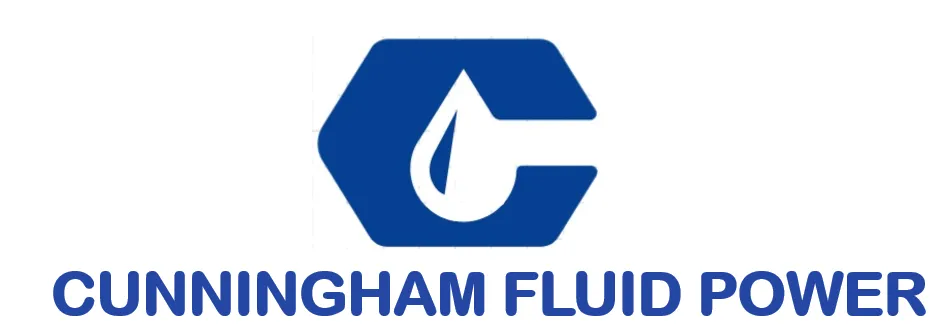2025 Top 10 Prefab House Innovations: Exploring the Future of Sustainable Living
As the world grapples with pressing environmental challenges, innovative solutions in sustainable living have become paramount. The growth of the prefab house industry is a leading example of how architecture can evolve to meet modern demands. According to a report by the Modular Building Institute, the prefab construction market is projected to reach $157 billion globally by 2025, driven by advancements in technology, materials, and consumer awareness of sustainability.
Experts in the field are recognizing the significant impact of prefab houses in reducing carbon footprints and improving energy efficiency. Dr. Emily Thompson, a noted architect and consultant in the sustainable housing sector, emphasizes, "Prefab houses are not just a trend; they represent a fundamental shift in how we approach building design and living sustainably." This innovative approach allows for decreased waste during construction and can lead to energy savings of up to 50% compared to traditional building methods.
As we look towards 2025, the top ten innovations in prefab housing are set to redefine our understanding of what sustainable living can achieve. These advancements not only promise to enhance efficiency and design but also align closely with the global imperative for greener, more sustainable lifestyles.
Innovative Materials: The Future of Eco-Friendly Prefab Construction
The evolution of prefab houses is progressively intertwined with innovative materials that champion eco-friendliness. In 2025, we can expect to see a surge in the use of sustainable materials such as bamboo, recycled plastics, and structural insulated panels (SIPs). These materials not only reduce the environmental footprint of construction but also enhance the durability and energy efficiency of prefab homes. Innovations in material science are leading to alternatives that minimize waste and maximize the lifecycle of each structure, which is critical in our quest for sustainable living.
Tips for selecting eco-friendly materials include researching the sourcing and manufacturing processes of the materials you consider. Look for certifications such as the Forest Stewardship Council (FSC) for wood products or the Cradle to Cradle certification for a range of materials. Furthermore, consider the thermal performance of materials; insulated panels can significantly reduce energy consumption by providing more effective climate control within the home.
As we embrace these advances, the future of eco-friendly prefab construction lies in collaboration and continuous innovation. Using smart technologies, architects and builders can create homes that not only meet sustainability standards but also provide comfort and aesthetics. Staying informed about new materials and technologies can help prospective homeowners make decisions that align with their environmental values and contribute to a greener future.
Smart Technology Integration: Enhancing Efficiency in Prefab Homes
As we approach 2025, the integration of smart technology in prefab homes is set to revolutionize sustainable living. With a global prefab concrete market expected to reach $1,605.3 billion by 2025, advancements in smart technology are enhancing the efficiency and functionality of these structures. Smart home technologies such as IoT devices, automated systems, and energy management solutions are becoming essential components in modern prefab houses. These innovations not only optimize energy consumption but also improve comfort and convenience for residents.
The rise of Building-Integrated Photovoltaics (BIPV) further exemplifies this trend, with the market projected to grow significantly over the next few years. As solar technology becomes seamlessly integrated into building materials, prefab homes have the potential to generate their own energy, significantly reducing their carbon footprint. This shift towards energy-efficient designs, coupled with user-friendly smart technologies, promises a sustainable future where prefab homes adapt to the needs of their inhabitants while minimizing environmental impact.
Modular Design Trends: Flexibility for Modern Lifestyles
As we look towards 2025, the landscape of prefab housing is rapidly evolving, particularly through the lens of modular design trends that emphasize flexibility for modern lifestyles. The shift towards modular construction allows for homes that can easily adapt and transform according to the inhabitants' needs, making them ideal for individuals and families in today's fast-paced world. Modular homes are designed using prefabricated components that can be assembled quickly on-site, significantly reducing construction time while also being cost-effective.
One of the key innovations in this area is the integration of customizable layouts. Homebuyers can choose from a variety of configurations and finishes, enabling a personalized living experience without the extensive delays associated with traditional building methods. Furthermore, advancements in sustainable materials and energy-efficient design principles ensure that these homes not only meet the demands of modern living but also champion environmental responsibility. This focus on sustainability, combined with modular flexibility, positions prefab housing as a forward-thinking solution for the future, appealing to a demographic increasingly concerned about their ecological footprint while seeking convenience and comfort in their living spaces.
2025 Top 10 Prefab House Innovations: Exploring the Future of Sustainable Living
| Innovation | Description | Sustainability Features | Modular Flexibility | Projected Cost ($) |
|---|---|---|---|---|
| Solar-Powered Modules | Prefabricated units equipped with integrated solar panels. | Harnesses renewable energy, reduces carbon footprint. | Easily combined with other modules for increased space. | 150,000 |
| Recycled Material Construction | Homes built using reclaimed and recycled materials. | Minimizes waste, promotes circular economy. | Can adapt shapes based on available materials. | 120,000 |
| Smart Home Integration | Prefabricated homes with built-in smart technology. | Energy management systems, efficient water usage. | Flexible layout adjustments through tech. | 200,000 |
| Vertical Gardening Systems | Modular homes with integrated vertical gardens. | Enhances air quality, reduces urban heat. | Customizable garden designs for different spaces. | 130,000 |
| Energy-Efficient Insulation | Homes using advanced insulating materials. | Reduces heating and cooling costs significantly. | Modular design allows for varied insulation strategies. | 140,000 |
| Water Harvesting Systems | Integration of rainwater collection systems. | Promotes water conservation and usage efficiency. | Flexible installation options based on local geography. | 115,000 |
| Bamboo Structural Elements | Utilization of bamboo for structural frameworks. | Sustainable, fast-growing material source. | Modular sizing based on design requirements. | 125,000 |
| Zero-Energy Designs | Homes designed to produce as much energy as they consume. | Maximizes renewable energy usage. | Expandable design elements to increase energy production. | 250,000 |
| Eco-Friendly Finishes | Use of low-impact and biodegradable finishes. | Reduces chemical exposure and environmental harm. | Options for customization in surface finishes. | 110,000 |
| 3D-Printed Elements | Components created using advanced 3D printing technology. | Reduces material waste, allows for intricate designs. | Highly customizable shapes and forms. | 160,000 |
Energy Efficiency Solutions: Sustainable Power in Prefab Housing
As we venture into 2025, the integration of energy efficiency solutions within prefab housing is carving new pathways toward sustainable living. Modular homes are increasingly being recognized for their ability to combine sleek designs with eco-friendly features, enabling homeowners to significantly reduce their energy consumption. Reports suggest that the demand for energy-efficient, panelized homes—pre-manufactured in factories—has surged, reflecting consumers' growing awareness of sustainability. This shift is echoed in the market, where the global modular UPS market is projected to expand dramatically, reaching approximately $14.32 billion by 2034.
Tips for Sustainable Living in Prefab Homes:
1. Opt for Renewable Energy Sources: Incorporating solar panels can drastically cut energy costs and reliance on non-renewable resources.
2. Invest in Smart Technology: Integrating smart home devices can enhance energy management, ensuring that resources are used efficiently while maintaining comfort.
The collaboration between industry leaders to develop modular power solutions highlights this trend in prefabricated construction. Such innovations not only optimize deployment times and reduce costs but also significantly minimize carbon emissions, further solidifying the role of prefab housing in the sustainable future. As reported, these advancements, including innovative thermal management systems, are optimized to promote a greener lifestyle, positioning prefab homes at the forefront of the energy-efficient housing movement.
Sustainable Landscaping: Connecting Prefab Homes with Nature
Sustainable landscaping is an essential aspect of modern prefab homes, providing a seamless connection between built environments and nature. As reported in the "2023 Green Building Market Report," over 60% of homeowners prioritize landscaping features that enhance ecological balance, such as native plantings, rain gardens, and permeable pavers. By integrating these elements into prefab designs, homeowners can create resilient outdoor spaces that not only look beautiful but also support local biodiversity and water conservation.
Moreover, the implementation of sustainable landscaping practices has tangible environmental benefits. According to a study by the American Society of Landscape Architects, strategically designed landscapes can reduce stormwater runoff by up to 30%, alleviating pressure on municipal drainage systems. This is particularly crucial as urban areas continue to expand, leading to increased flooding and water quality issues. Therefore, embracing sustainable landscaping alongside innovative prefab housing solutions paves the way for a more sustainable and interconnected living experience for future generations.

We have over 30 years of experience in designing complete hydraulic systems, repairs and distribution of fluid power equipment and parts.
FOLLOW US ON :
Contact Details
Address:
4020 SE 45th CT.
Ocala, FL 34480
Phone No:
Email:
sales@cunninghamfluidpower.com

